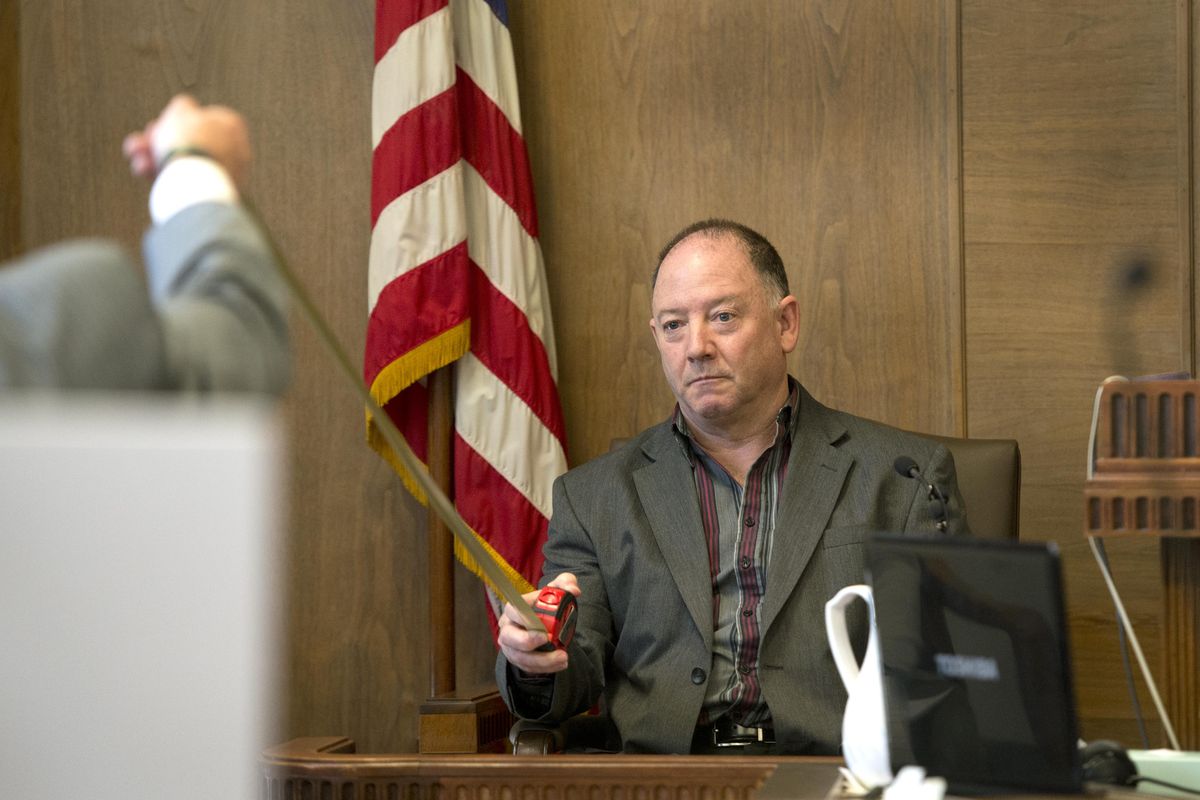This column reflects the opinion of the writer. Learn about the differences between a news story and an opinion column.
Shawn Vestal: Spokane juries keep showing a loose definition of self-defense

Is there any kind of vigilante shooting-in-the-back that a Spokane jury won’t bless with a not-guilty verdict?
We already knew that, by the lights of a Spokane jury, you can shoot a guy if you’re a drunken, off-duty cop chasing a man you incorrectly believe tried to steal a car. A Spokane jury will call this self-defense, which we learned in 2009 when former Spokane police Officer Jay Olsen was acquitted for shooting Shonto Pete.
We already knew that, by the lights of a Spokane jury, you can shoot someone who steals your car even if they’re way down the street, heading in the other direction. A Spokane jury will call this self-defense, as we learned with the acquittal in 2014 of Gail Gerlach, who killed Brendon Kaluza-Graham.
Now we know that, by the lights of a Spokane jury, you can shoot a guy if you see him beating a woman, stop to fight him with two knives, get knocked on your rear end and taunted in the ensuing fight, and fire a 9 mm pistol into his back as he walks away. A Spokane jury will call this self-defense, as we learned last week with the acquittal of Edward Bushnell, who killed William Poindexter in 2015.
By now, this is clear: If you want to shoot someone with a loose self-defense rationale, try to get yourself a friendly Spokane jury. The only question is how far you can push the definition of defending yourself.
If someone punched you hard in the face, for example, could you shoot them in the back the following day? If you saw a man beating a woman, could you shoot him in the back a week later?
Why not?
The Bushnell acquittal seems outrageous on many fronts, not the least of which is the fact that Bushnell is white, as were all of the jurors, and Poindexter was black. Local leaders in the African-American community responded to the verdict – as well as the way the story was covered, or not covered, in the media – with understandable shock and anger.
At a rally over the weekend, the Rev. Walter Kendricks located the blame for the verdict not with cops and prosecutors – where discussions of systemic racism often focus – but within the community that produces our juries. Our people.
Us.
“We have to start, honestly, looking at ourselves,” said Kendricks, pastor of Morning Star Missionary Baptist Church and head of the Spokane Ministers’ Fellowship. “That verdict did not come in a vacuum. There were 12 people that decided it was OK.”
Would a similar Spokane dozen have exonerated a black man who shot a white man under similar circumstances? Would a jury here somehow see the situation in the same light had a black man told police how he aimed his pistol, with a two-handed grip, “focused on the area between his shoulder blades and the upper back” of a white man walking away, as police reports say Bushnell did?
I find that very hard to imagine.
According to court records, Bushnell was skateboarding near the intersection of Fifth and Stone, by the East Central Community Center, on July 21, 2015, when he saw Poindexter assaulting a woman. Bushnell was carrying at least two knives, and a 9 mm pistol in a backpack with an extra magazine in the pocket of his shorts. He had a license to carry the gun.
Bushnell told police he intervened to protect the woman, and the two men began yelling and fighting. “Bushnell said at the time he pulled out two of his knives: one was smaller and a folding-style knife, and the other was a fixed blade,” according to police reports.
Poindexter was armed with a small bat or club, and Bushnell was struck in the face with either the club or a fist. He was knocked to the ground and cut under an eye, and according to several witnesses, Poindexter taunted him and walked away. Witnesses said Poindexter turned back toward Bushnell, perhaps more than once, as he was walking away.
This is the crucial moment in terms of self-defense. Under the law, you may use force to defend yourself when you’re under attack or the reasonable fear of attack, or to protect others from a similar attack.
Bushnell took his pistol from his backpack and aimed at Poindexter, who was between 20 and 30 feet away and headed in the other direction, according to witnesses. “I reacted instinctively,” Bushnell told police, describing firing three shots, two of which struck Poindexter in the back.
The defense offered a police training official who said Bushnell’s military training, which he received in part when serving in Iraq, led him to react “without conscious thought” to the “imminent threat” of Poindexter looking back at him with a bat in his hand while walking away. It was, the official said, “reasonable self-defense.”
In his first statement to police, Bushnell said he did it in self-defense. Later, asked what he was thinking when he shot, he said, “I couldn’t tell you. I guess protect myself and the girl.”
Asked specifically why he shot him in the back, Bushnell said, “I don’t know. I thought about it after I pulled the trigger.”
Is that what reasonable self-defense looks like to you? If so, there’s a spot waiting for you on a Spokane jury.
